Photographs: Ng Han Guan/Reuters
Dr Fravel is perhaps the premier expert on China's border problems -- although he himself denies it. As MIT's faculty site describes him, Dr Fravel, the Cecil and Ida Green Career Development Associate Professor of Political Science and member of the Security Studies Program at MIT, studies international relations, with a focus on international security, China and East Asia.
He has also authored a book on China's border disputes, Strong Borders, Secure Nation: Cooperation and Conflict in China's Territorial Disputes. A Rhodes Scholar who studied at Oxford University, he has a PhD from Stanford University and a graduate degree from the London School of Economics.
In an interview with rediff.com's P Rajendran, Dr Fravel argues that China has beefed up border security and associated infrastructure along all of its borders not just the one with India, although it has settled all its land border disputes, except those with India and Bhutan. He also suggests that India has tried to make most of the concessions that China was willing to offer, thus influencing the intensity of the conflict.
Dr Fravel believes that while territorial disputes are always intensely emotional, both sides need to sit down and reach a mature compromise on the matter.
As you see it, what is the genesis of India's border problem with China?
The problem goes back to the period of state formation of both modern India and the People's Republic of China.
Are you referring to issues over the McMahon Line?
No, I'm referring to the period after which independent states were established in India and in China, and the efforts by the states to define their boundaries.
You mean this involves only India and China and not the British role when deciding the border?
That's the primary problem (in the India-China border dispute). The McMahon Line and other British policies are a contributing factor. But even in the absence of the McMahon Line the two States would still need to define their boundary and agree upon that boundary.
The McMahon Line provides a reference point for doing so, but, as you know, the history of the Line itself is contested by China today.
'China has had territorial disputes with all its neighbours'
Image: Indian soldiers patrol the border with China in Tawang.Photographs: Utpal Baruah/Reuters
The period of Nehru's early rule as well as the period of Mao's early rule because both India and China did not have clearly demarcated borders with all of their neighbours. Especially China. India doesn't have as many neighbours as China.
When I mean "clearly demarcated," I mean a detailed diplomatic document specifying the precise location of the boundary.
China has had boundary disputes with a variety of countries Russia, Japan, Vietnam, the Philippines ...
That's right. China has had territorial disputes with all of its neighbours (except for Sikkim before it was incorporated into India).
Is this something to do with a Chinese need for expansion? For example, as (the well-known activist for an autonomous Tibet) Robert Thurman told me, because the Chinese had occupied Tibet for a short period they believed it belonged to them for all time.
No, I would disagree with that conclusion. When China was established in 1949 the government, led by the Communist Party, sought to consolidate the boundaries of what I would call the late Qing dynasty (the last ruling dynasty rulers of China, which ended in 1912).
But by and large China has accepted more or less the delimitations contained in what China refers to as the unequal treaties that were signed between the Qing government and various foreign powers.
In some areas there were no prior treaties or agreements and in those areas China sought to consolidate control over what it viewed as the extent of Qing power or influence when the Qing collapsed.
What this means is that China has not issued demands for large tracts of territory that were part of the Qing dynasty at its height.
That includes Mongolia, areas in the Russian Far East, areas in Central Asia, areas in Burma, and so forth. If one wanted to conclude that China claims territory in order to expand then one would have to explain why China has not claimed all of this additional territory, which in total size is far greater than the territory contested with its neighbours after 1949.
China only contested roughly 7 percent of the territory that was part of the Qing dynasty at its height.
Also Read: Why India is clueless about China
'It is time to wake up to Chinese incursions'
'The McMahon Line was literally drawn on a map with a thick pen'
Image: Indian, Chinese troops mark the People's Republic of China's 60th anniversary, in Arunachal PradeshPhotographs: Utpal Baruah/Reuters
The McMahon Line was literally drawn on a map with a thick pen. For the McMahon Line, there is no protocol which uses cartographic techniques to identify the location of the line (Sir Henry) McMahon proposed.
What McMahon did was simply to draw a line on an existing map with a pen. That's not the best way to make a boundary.
That is how Britain divided India and Pakistan, too, right? In a rather arbitrary way.
Yes, the division of Pakistan and India is another great example of poor mapmaking with, as you know, absolutely catastrophic results.
The recent reported incursions into Indian territory have caused much concern in India. And it is fuelled by comments from Chinese sources that China can break up India. How do you think this problem comes about?
The problem comes about because the Government of India and the government of China do not agree upon the location of the Line of Actual Control. That's the fundamental problem.
But this incursion came through a border the two sides had agreed on. Or am I wrong?
After the war in 1962 a zone of control formed between the two sides. It subsequently came to be known as the Line of Actual Control. But the Line of Actual Control was not precisely detailed on a map. And because of the harsh topographical conditions in these areas, most border sentry posts are not actually located on the Line of Actual Control that separates the two sides.
Instead, they are located some distance to the interior on either side.
As I believe one Indian general (Indian Army Chief Deepak Kapoor) said recently, the Line of Actual Control is often a matter of perception. Thus, China may conduct a patrol in an area that India believes is across what it believes to be the Line of Actual Control and thus call that an incursion.
In Chinese eyes, that's not an incursion. Conversely, India may conduct a patrol that China considers to be across the Line of Actual Control.
Also Read: China: Will India repeat the mistakes of 1962?
Why Barack Obama won't meet the Dalai Lama
'China has strengthened defences along all its borders'
Image: A photograph taken by a Philippine reconnaissance plane shows one of the structures which Philippine officials said China has built on a reef claimed by the Philippines on the disputed Spratly Islands in the South China Sea.Photographs: Reuters
(Hurrying on) This is very important. What the Indian media refers to as an incursion may not well be incursions. And often times the Indian government denies that incursions have occurred when local officials in India report that they have occurred.
What is clear is (that) Chinese activity on the border has increased in the last several years. What I mean here is the frequency of its patrols, and that in itself is threatening to India if it cannot patrol at the same level of frequency.
Secondly, the quality of the Chinese border troops has increased and the infrastructure that China has created for border defence has improved substantially in the last decade.
For example, there are roads -- not highways -- that connect Chinese sentry posts with each other and also with rear base areas.
In the past, these sentry posts were not connected with each other. From the Chinese perspective, there were large gaps in its border defences. Some of these sentry posts were not connected to any road at all and were only accessible on horseback.
So what China has done since the mid-1990s is to invest heavily in upgrading the infrastructure for its border defences in these remote regions. This includes the border with India but it also includes the border with Russia, the border with Kazakhstan, and all of China's other borders.
All of its borders?
All the borders. So the upgrading of infrastructure is not directed specifically against India; instead, it is part of a general plan to strengthen China's border defences all along its border.
It has a special impact in India because the border isn't resolved. But this is part of a general Chinese policy, not one that is specifically targeting India.
There is the argument made that this could be a way China may be transferring attention from its internal problems and outside the country. Didn't Argentina do that in the Falklands, leading to a war with Britain?
No, I don't think so. China's internal politics has been very turbulent since 1989. China has fought no wars since 1989. If internal domestic political unrest was a cause of conflict one might have seen it frequently in China's foreign policy behaviour over the last 20 years.
Also Read: We've forgotten the past. China hasn't
The danger of the India-China hysteria
'After the '62 war, compromise with China has been harder for Indian politicians to consider'
Image: A Chinese police officer at an exhibition to mark the 50th anniversary of the liberation of Beijing.Photographs: Reuters
Historically, whenever China has faced unrest, especially ethnic unrest in its frontier regions, it has been more willing to compromise with its neighbours than to use force against them. That was one of my main arguments in my book on China's boundaries.
But there has been talk on a Chinese Web site that spoke of how China can deal with India.
I don't know the specifics of what you are referring to and who said it. Because the media in China today is less constrained than it has been in the past, and not all reports that are in the media or on the Internet in China necessarily reflect official positions of the government.
But this was reported as being a think-tank, not the media itself.
It wasn't a think-tank. What you're referring to is a Web site in Shanghai run by some private individuals. It was in no way connected to the government. (Kang Lingyi, the owner of the site, iisc.cn, told the Times of India as much). In other words, the government was not rattling its sabres. It obviously got a lot of attention in India because of the content, which I can understand.
So what do you think is a solution for India and China's border problem?
The only solution is to find some kind of compromise that is deemed to be acceptable to both sides.
Territorial disputes are intensely emotional conflicts between States because they impinge upon conceptions of identity, notions of sovereignty and so forth. Compromising is very difficult.
But disputes can only be settled -- or are almost always settled -- when some compromise solution is found.
There have been efforts before to resolve this crisis. but it doesn't appear to have gone anywhere. Why do you think that is the case? Do you know some cases it may have been set right?
Well, in April of 1960, (then Chinese) premier Zhou Enlai travelled to New Delhi for talks with Indian officials, including prime minister (Jawaharlal) Nehru. And in those talks, Zhou Enlai proposed what was later described as a package deal solution where China would drop its claim in the Eastern sector and India would drop its claim in the Western sector.
At that time Nehru was not -- as I understand the situation -- willing to compromise, largely because of the strong domestic backlash that would follow.
Subsequent to that Deng Xiaoping proposed a similar settlement on the number of occasions in the late 1970s and early 1980s. In the aftermath of the (the 1962 Indo-China) war, however, compromise with China has been even harder for Indian politicians to consider.
This is not to say a compromise cannot be found in the future. It can, but it calls for farsighted leaders who can convince their public that such a solution is the right way to handle the problem.
Also read: 'Both India and China look down on each other'
Aksai Chin for Arunachal?
'An ongoing territorial dispute does provide fuel for nationalists'
Image: A Chinese soldier takes photographs at Nathu La in Sikkim in 2005.Photographs: Rupak De Chowdhuri /Reuters
India has always preferred what is known as a sector by sector approach, whereby the boundary in each sector is negotiated independently.
Because China expressed a willingness to drop its claim in the Eastern sector, I think India believes that it can use this strategy to maximise concessions from China. Because China has already suggested dropping its claims in one sector, India can also seek concessions in the Western sector.
China has opposed this and one reason why China has increased the prominence of Tawang (in Arunachal Pradesh] is because India prefers to pursue a sector by sector approach.
China is signaling to India that if a sector by sector approach is pursued, China will expect concessions in both sectors from India.
I won't judge that as a mistake. It's not my position to judge either country, but I would just point out how that changed the nature of the intensity by which China has pressed its claims.
What is the status of China's other border disputes?
China has settled all of its land border disputes except those with India and Bhutan.
So China has settled other issues, like the Spratly Islands (with the Taiwan-based Republic of China)?
It has only settled one of its offshore island disputes. When it settled its land border disputes, it did it through compromise agreements where it offered concessions to the opposing sides.
That includes Russia?
It includes Russia, with agreements in 1991, 1994 and 2004. They had similar agreements with Nepal, Burma, Afghanistan, Pakistan Yes, Pakistan is interesting because they signed an agreement in 1963 and this one was only a temporary agreement, pending the settlement of the dispute between India and Pakistan over Kashmir.
When that agreement was signed, India objected because it believed that Pakistan gave away too much of Kashmir to China.
Thus, there is an additional territorial dispute lurking between China and India if the Kashmir conflict is ever resolved.
This gives grist for the mills of nationalists both in India and China?
It is easier to see in India, which is a democracy, but in both countries the persistence of an ongoing territorial dispute does provide fuel for nationalists, especially nationalists who want to criticise their governments for being soft or being weak.
Also read: The Great India-China Game
Sinister truth behind China's border misadventure

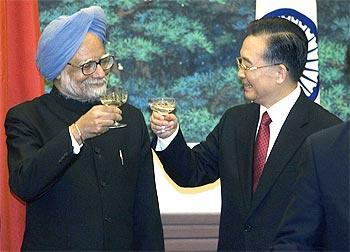

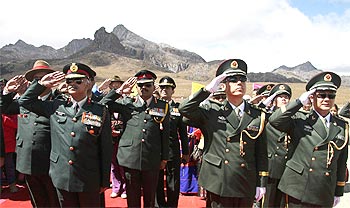
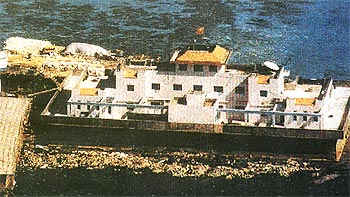
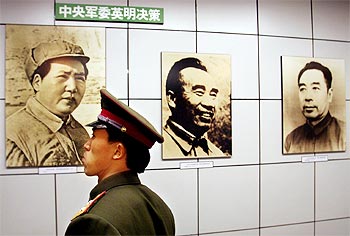
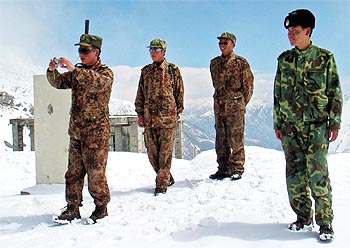
article